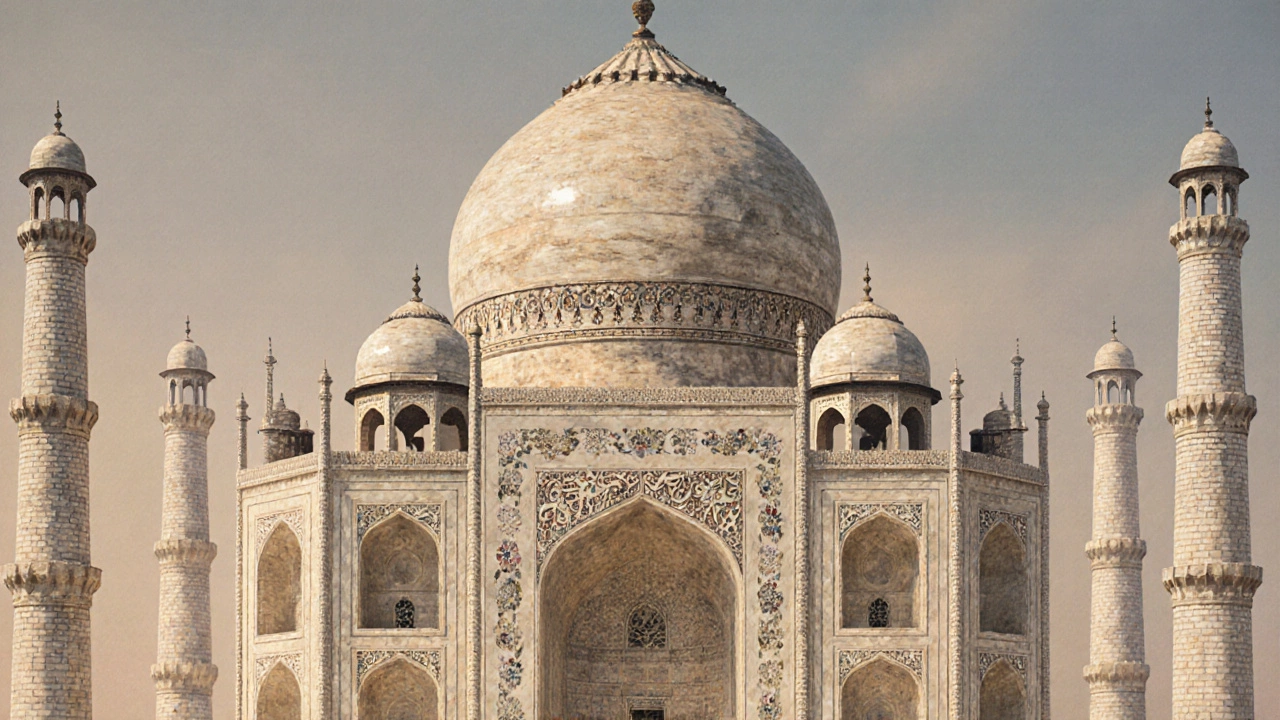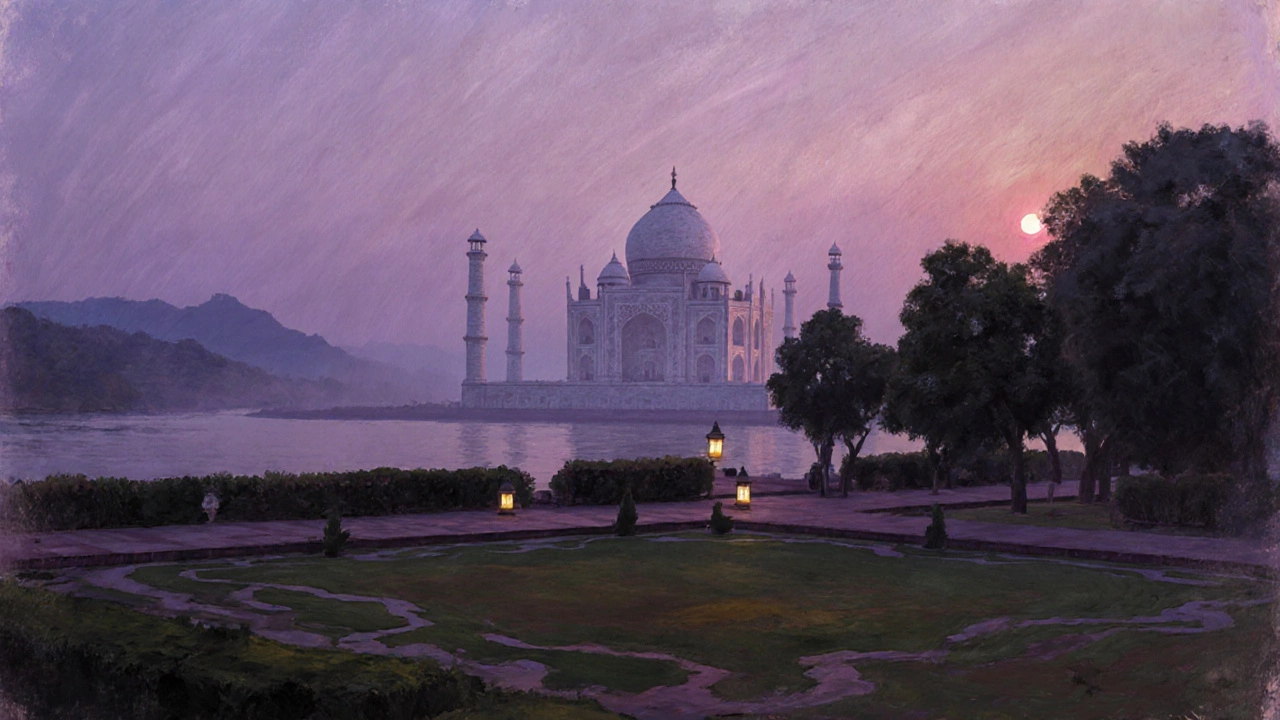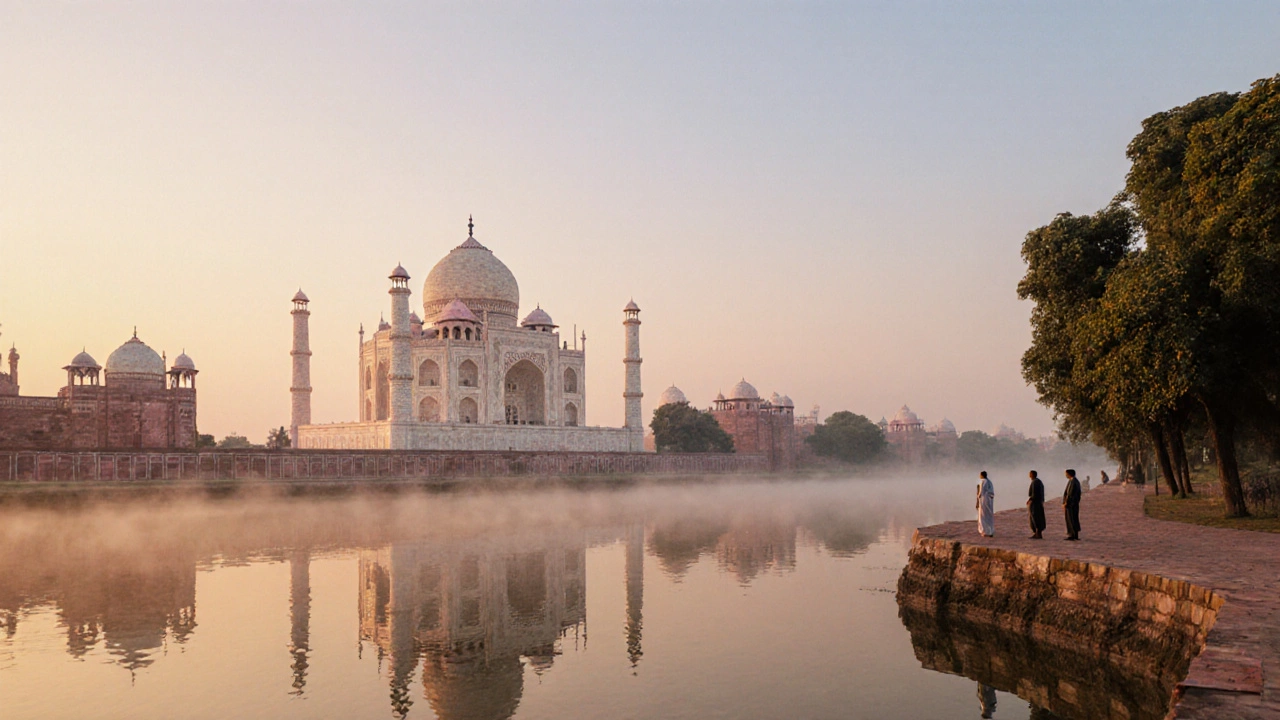Taj Mahal Trip Cost Calculator
Trip Details
Trip Estimate
Estimated Total Cost
Tip: Visiting from October to March is recommended for cooler weather and the best marble glow. Entry fees are ₹50 for Indians and $20 for foreigners.
Quick Takeaways
- The Taj Mahal is India’s most iconic tourist attraction, drawing over 7million visitors a year.
- Built between 1632‑1653 by Mughal emperor Shah Jahan in memory of his wife Mumtaz Mahal.
- It’s a UNESCO World Heritage Site and a masterpiece of white marble architecture.
- Best time to visit: October to March, when the weather is cool and the marble glows pink at sunrise.
- Getting there is easy via Agra’s railway station, the nearby Taj Mahal Expressway, or a short drive from Delhi (about 200km).
When you think of India tourist attractions, one name towers above the rest: the Taj Mahal. This white‑marble tomb isn’t just a pretty building; it’s a love story frozen in stone, a symbol of Mughal grandeur, and a must‑see stop for anyone traveling across the subcontinent.
What is the Taj Mahal?
Taj Mahal is a marble mausoleum commissioned by Emperor Shah Jahan in memory of his beloved wife Mumtaz Mahal, located on the southern bank of the Yamuna River in Agra, Uttar Pradesh. The structure combines Persian, Ottoman, and Indian architectural elements, creating a silhouette that has become instantly recognizable worldwide.
Historical Context: The Mughal Empire and the Love Story
The Taj Mahal was built during the golden age of the Mughal Empire a dynasty that ruled most of the Indian subcontinent from the early 16th to the mid‑19th century. Shah Jahan, the empire’s fifth emperor, was devastated by the death of his second wife, Mumtaz Mahal, in 1631. To honor her, he ordered a monument that would "float on the waters of the Yamuna"-the result is the Taj Mahal we see today.
Mumtaz Mahal herself, a Persian‑born princess, was more than a consort; she acted as a trusted political adviser and bore Shah Jahan fourteen children. The Taj Mahal reflects not only personal grief but also the empire’s wealth and artistic ambition.
Architectural Highlights and Materials
The Taj Mahal’s core is constructed from white marble a fine, translucent stone quarried in Makrana, Rajasthan, prized for its ability to reflect sunlight and moonlight. In total, over 20000 workers and artisans from across the empire contributed, including stone carvers, calligraphers, and inlay specialists.
Key features include:
- Central dome: 35m high, flanked by four smaller domes.
- Minarets: Four slender towers, each 40m tall, slightly tilted outward to protect the main structure during earthquakes.
- Inlay work: Semi‑precious stones such as lapis lazuli, jasper, and agate form intricate floral and geometric patterns.
- Calligraphy: Quranic verses in Persian calligraphy adorn the interior walls.

UNESCO World Heritage Status
In 1983, the Taj Mahal was added to the UNESCO World Heritage List a registry of sites of outstanding cultural or natural importance to humanity. UNESCO praised it as "the jewel of Muslim art in India and one of the universally admired masterpieces of the world".
How to Get There: Transportation Options
Agra is well‑connected, offering several ways to reach the Taj Mahal:
- By train: Indian Railways operates frequent services from Delhi, Jaipur, and Lucknow to Agra Cantt station. From the station, taxis or auto‑rickshaws are a 15‑minute ride.
- By road: The Taj Mahal Expressway a six‑lane highway linking Delhi to Agra, reducing travel time to under three hours. Bus services also run regularly.
- By air: The nearest airport is Agra Airport a domestic airport handling limited flights, primarily from Delhi and other regional hubs. From the airport, a short car ride brings you to the monument.
Visiting Details: Tickets, Timings, and Tips
Entry fees (as of 2025) are structured by nationality:
- Indian citizens: ₹50 (adult), ₹30 (senior/child).
- Foreign tourists: $20 (adult), $10 (children under 15).
Tickets are purchased at the main entrance or online via the official Archaeological Survey of India portal. The site opens daily from 6am to 7pm, with a brief closure at noon for maintenance.
Pro tip: Arrive right at sunrise. The marble glows pink, and crowds are thinner. If you can’t make sunrise, the sunset view from the Mehtab Bagh a garden on the opposite bank of the Yamuna River offering panoramic views of the Taj Mahal is spectacular.
Nearby Attractions: Making the Most of Your Trip
Since you’ll be in Agra, combine the Taj Mahal with other historic sites:
- Agra Fort a red‑sandstone fortress, also a UNESCO World Heritage Site, showcasing Mughal military architecture - just a 10‑minute drive away.
- Fatehpur Sikri: a deserted royal capital about 40km from Agra, famous for its well‑preserved palaces and courts.
- Keethar Mata Temple: a hilltop temple offering sunset vistas over the river.

Preservation Challenges and Ongoing Efforts
The Taj Mahal faces several threats:
- Air pollution: Fine particles cause the marble to yellow; regular cleaning with a special solution helps.
- River erosion: The Yamuna’s water level fluctuations can affect the foundation; a protective embankment was built in 2017.
- Tourist wear‑and‑tear: Over 7million visitors per year increase foot traffic; designated pathways and restricted zones protect interior chambers.
India’s Ministry of Culture collaborates with UNESCO and private sponsors for continuous restoration, ensuring the monument remains pristine for future generations.
Comparison of India’s Top Landmark Experiences
| Attraction | Location | Year Completed | UNESCO Status |
|---|---|---|---|
| Taj Mahal | Agra, Uttar Pradesh | 1653 | World Heritage Site (1983) |
| Hawa Mahal | Jaipur, Rajasthan | 1799 | National Heritage |
| Khajuraho Temples | Khajuraho, Madhya Pradesh | 1100‑1150 | World Heritage Site (1986) |
While each site offers a distinct flavor-Mughal romance, Rajput architecture, or ancient Hindu sculpture-the Taj Mahal remains the most universally recognized symbol of India’s cultural wealth.
Frequently Asked Questions
When is the best time of day to photograph the Taj Mahal?
Sunrise is ideal-the marble glows pink in the early light and crowds are thinner. Sunset from Mehtab Bagh also yields dramatic silhouettes.
Are there any dress codes for visitors?
No strict dress code, but modest attire (shoulders and knees covered) is respectful, especially for Indian visitors.
Can I enter the Taj Mahal’s interior?
Yes, a separate ticket (about $5) grants access to the main chamber where the cenotaphs of ShahJahan and MumtazMahal are housed.
How long does a typical visit last?
Allocate 2‑3hours to explore the gardens, the main building, and nearby viewpoints without feeling rushed.
Is the Taj Mahal wheelchair‑accessible?
Yes, ramps are available at the main entrance, and the interior pathways are level, but the marble floors can be slippery when wet.
What are the current entry fees for foreign tourists?
As of 2025, it’s $20 for adults and $10 for children under 15. Prices are subject to change, so check the official ASI website before you travel.
Final Thought
If you have only one Indian landmark to cross off your bucket list, make it the Taj Mahal. Its blend of love, art, and engineering makes it more than a photo stop-it’s a living page of history you can walk through. Pair it with nearby sites, travel during the cooler months, and you’ll walk away with memories that match the monument’s timeless beauty.
